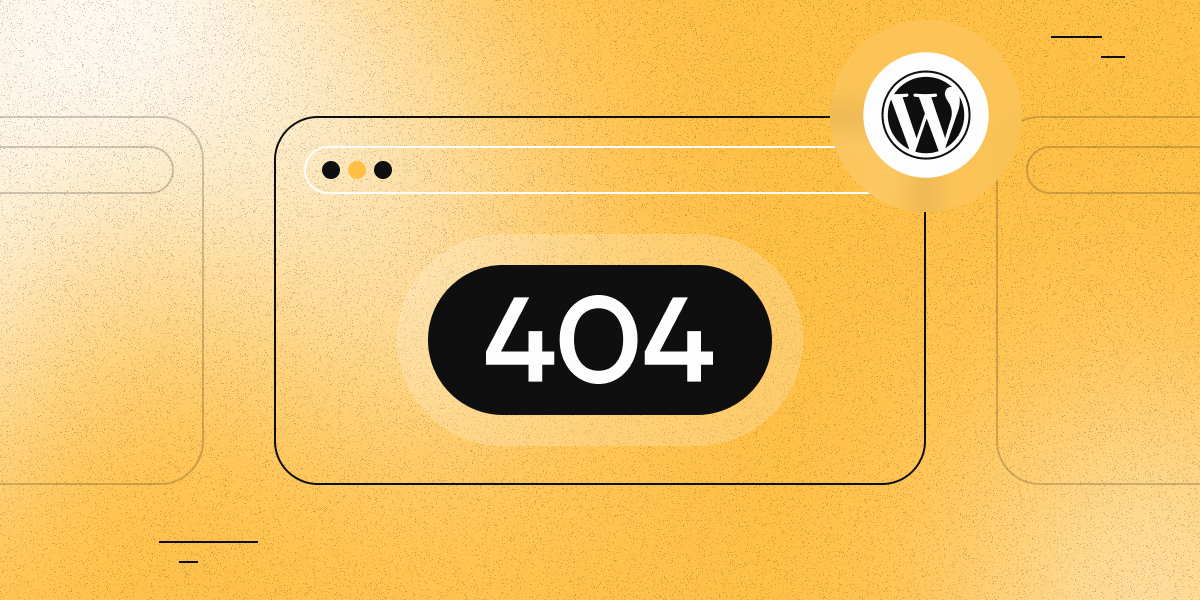Error 404 in WordPress: where it comes from and how to fix it

Error 404 Not Found is one of the most common problems WordPress site owners face. This message appears when the server cannot find the page requested by the user. The reason could be due to link settings, deleted content, or even the theme of the site.
If not handled properly, the error can affect visitor behavior and search rankings. In this article, briefly and to the point, we will tell you why a 404 error appears in WordPress and how to fix it.
What the 404 error means in WordPress
When someone visits your site, WordPress tries to match the URL with records in the database. If the page is not found, a 404 error is displayed. This is not a server failure; the site continues to work, but the specific page is missing.
Why does 404 occur in WordPress
- Permalink structure is broken
One of the most common reasons. For example, you changed the URL structure in Settings → Permalinks, but WordPress did not update the .htaccess file. In this case, all pages except the homepage will return a 404 error. To fix this, you can manually update the .htaccess file or re-save the permalink settings in the WordPress admin panel - this will force WordPress to regenerate the .htaccess file with the correct rules.
- Page or post deleted
If you have deleted a post or page, but the links to it remain (for example, in the menu, in search, or on other sites), visitors will be taken to a 404 page.
.htaccessfile corrupted
This file is responsible for URL routing. If it is accidentally deleted or damaged, WordPress cannot process addresses correctly.
- Theme or plugin issues
Sometimes, a 404 error appears after installing or updating a plugin, especially if it works with URLs, routes, custom post types, etc. There can also be errors in the theme’s functions.php file.
How to fix a 404 error in WordPress
✅ 1. Regenerate permalinks
Go to Admin → Settings → Permalinks → simply click “Save Changes”. Even if you don’t change anything, WordPress will rebuild the structure and update .htaccess.
✅ 2. Check the .htaccess file
Connect to the site via FTP or through the file manager in the control panel. Find the .htaccess file in the WordPress root. Its basic content:
# BEGIN WordPress
<IfModule mod_rewrite.c>
RewriteEngine On
RewriteBase /
RewriteRule ^index\.php$ - [L]
RewriteCond %{REQUEST_FILENAME} !-f
RewriteCond %{REQUEST_FILENAME} !-d
RewriteRule . /index.php [L]
</IfModule>
# END WordPress
If it is missing, create it and paste this code manually. Make sure the file has 644 permissions. For more information about the default .htaccess structure in WordPress, check out this article.
✅ 3. Disable suspicious plugins
If the error appeared after installing a plugin, temporarily disable it. If a custom post type is used (for example, WooCommerce products or a portfolio), make sure the plugin correctly registers routes.
✅ 4. Try a default theme
Sometimes, a 404 error is caused by errors in a custom theme. Switch to a default WordPress theme (for example, Twenty Twenty-Four) and check whether the error disappears.
✅ 5. Enable error logging
For debugging purposes, you can enable WordPress error output. Add the following lines to wp-config.php:
define( 'WP_DEBUG', true );
define( 'WP_DEBUG_LOG', true );
After that, errors will be saved to the /wp-content/debug.log.
✅ 6. Check server logs
If you use FASTPANEL, open the site card → “Logs” section → check the “Backend access log” and “Frontend access log” tabs. There, you can see which address caused the 404 error and where the request came from. This helps find “broken” links.
How to prevent 404s in the future
-
Do not change the link structure unless necessary.
-
Use the Redirection plugin to set up 301 redirects.
-
After deleting pages, update the menus and links.
-
Periodically check 404 errors in Google Search Console.
Conclusion
A 404 error in WordPress is unpleasant but solvable. Most often, simply saving the link structure or editing .htaccess helps. And if the problem lies deeper, the server log or debug file will help you locate it quickly.
By fixing 404s, you not only improve the site experience but also help its search promotion.